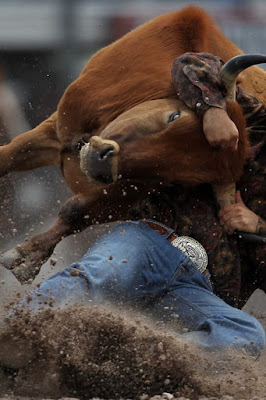At Thoughts on Tai Chi, there was a good post about whole body movement. An excerpt is below. The full post may be read here.
I try to follow some content creators, YouTube Tai Chi channels, etc. Recently I have found the vast majority of what is published and shared annoying, shallow and frankly said – useless for the common practitioner.
In the older literature and Tai Chi classics there’s no mention of “fascia”, there are no elaborate explanations about how to use “yi”. And if you haven’t read much of the older literature, you will have a very hard time find any passage or paragraph where you can read about how to “use Qi”.
Nowadays everyone try to explain what is actually very practical, simple things, that need hands-on learning, in a complicated, intellectual manner, while mixing Chinese and Western terms in the most confusing ways. I often have a feeling that they are more interested in themselves than in their students. What they say is certainly of very little help even if they speak more truths than just mumble-jumble.
Again, you won’t be able to read anything, or at least only a very little, of this in the texts and books written by older masters. And still those old masters could control and throw people away effortlessly.
The biggest trap is the intellectual process in itself. It makes
students focus in the wrong direction, it teaches students to “think”
about what they are doing, rather than to “feel”. You just cannot “do”,
“be aware” and be present in the moment if you try to “think” about how to do something, at the same time as you are doing it.
But being present in the moment is absolutely essential when it comes Tai Chi. Why? Because Tai Chi in practical practice,
against a partner or an opponent, is actually very fast and direct. To
make something work in Tai Chi, you must react directly and
instantaneous on what is happening. You need to attach yourself to your
opponent, on distance as well as upon touch, in a way you can react
directly and spontaneous on every small change.
Upon touch you
need to completely empty your mind so you can let your tingjin,
“listening skill” take over. This means to only rely on what you feel,
the sensory feedback, and react to what you feel. All your knowledge
and experience are preserved in your muscle memory. This is what you
need to be able to access, instantly and without conscious thought.
Your intellectual thought process is just too slow, it has no chance to do adjust what you do in the present. You actually need to access another part of your brain, and to do this you need to use your brain differently and tap into your nervous system in a way that is incompatible with logical figuring things out.
To explain this further and hopefully in a physiological way you can understand this process better, Muscle memory is defined as a neurological process that allows you to remember certain motor skills and perform them without conscious effort. Muscle memory is achieved when you reach the autonomous stage. It means that whole of your performance, all your movements, are smooth and accurate, as your brain’s main activity switches to the basal ganglia, the region involved with automatic functioning.
If you are not present in the moment, as in trying to “think out”
what and how to do something, you cannot access this part of your brain.
Again, instead of acting spontaneously, you will act clumsy, hesitant,
and also probably forget all what you have learned about song and
sinking, how to follow, react and act.
The mind-state known as “no-mind”, or wuxin,
is the key to be able to access the muscle memory and let your
accumulated knowledge work by itself. The more you practice, the more
hours you spend working with a partner in push hands and other
exercises, the more knowledge and experience will be stored in your
brain, nervous system and muscle fibers. Some studies suggest that
muscle memory causes muscle cell changes that last for at least 15
years, which, if this is true, it means that you can accumulate a whole
lot of knowledge and experience you can access through your muscle
memory if you keep up your practice for many years.
You really need to get rid of the mind-set of “figuring things out”.
If you approach your Tai Chi with intellectual curiosity only, which is
by all means in itself not a bad thing, it will be easy to get stuck in
this mind-state and let it color everything you do.
You need to focus on how things feel through your awareness.
It is said the skill is transferred by touch, from a master’s hands to a student’s. This is absolutely true. You need to experience first hand how a skilled teacher moves, act, feels. In terms of development, five-ten minutes personal on-hand instruction with a skilled teacher, is worth more than many hours of push hands practice with a partner of the same level, and more than one year of solo practice.
It is not what the teacher says that is important, but to experience the skill first hand.








